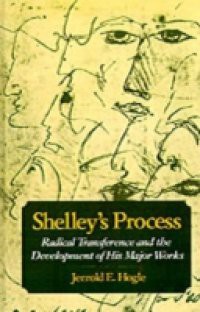In this set of thorough and revisionary readings of Percy Bysshe Shelley's best-known writings in verse and prose, Hogle argues that the logic and style in all these works are governed by a movement in every thought, memory, image, or word-pattern whereby each is seen and sees itself in terms of a radically different form. For any specified entity or figure to be known for "what it is," it must be reconfigured by and in terms of another one at another level (which must then be dislocated itself). In so delineating Shelley's "process," Hogle reveals the revisionary procedure in the poet's various texts and demonstrates the powerful effects of "radical transference" in Shelley's visions of human possibility.



















